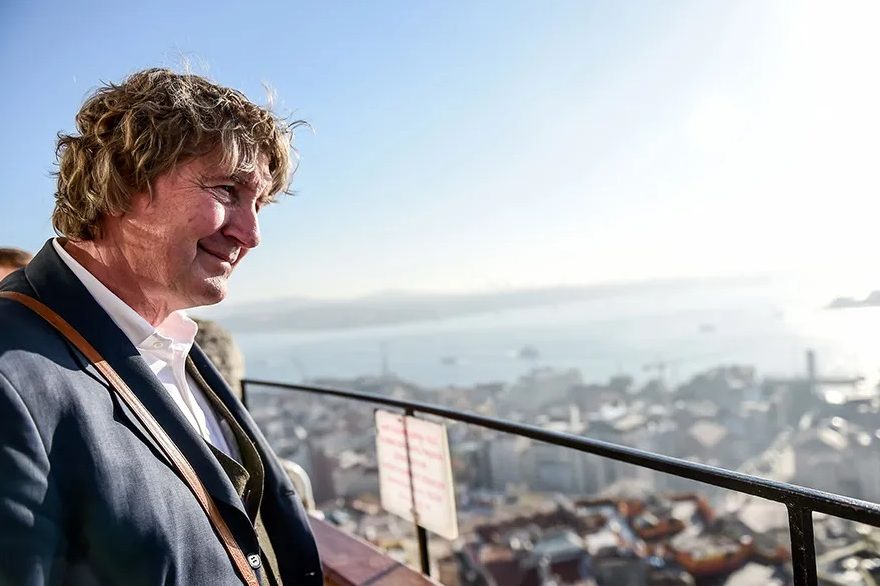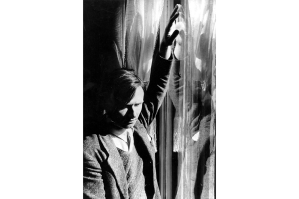When you are a foreign correspondent and have covered wars in dozens of countries, the last place you’d expect a threat to your life to come from is your own cells. Yet this was the predicament in which the New York Times reporter Rod Nordland found himself in July 2019. Despite close shaves in Lebanon, Iraq, Afghanistan, Central America and Darfur, he only really became aware of his mortality after collapsing with a seizure in India and discovering the existence of a “space occupying lesion” (SOL) in his brain — a euphemism for a growth, benign or malignant. On transfer to a hospital in Manhattan, Nordland learned that his was a stage four glioblastoma multiforme, a primary brain cancer with a poor prognosis.
The roads in Iraq became too dangerous, with bombs hidden in everything from prams to dead dogs
In Waiting for the Monsoon, he speaks in almost beatific tones of the diagnosis marking the beginning of a second life for him. He enthuses about the benefits it has brought — reuniting him with his ex-wife and estranged children, precipitating a reconciliation with an old friend and showing him how devoted his girlfriend, the writer Leila Segal, was to him. But the reader suspects there will be a coming down. It is easier to be optimistic in the early stages of a severe disease than it is later, when it starts to ravage mind and body.
The book splits into two parts — before the diagnosis and after — which makes for some repetition. Nordland gives us an outline of his youth, but then jumps back and forth a decade here and there. Still, one gains a strong idea of his past and personality. The eldest of six children, he idolized his mother but despised his father, a known pedophile, who was eventually imprisoned. His father’s brutality towards his mother colored Nordland’s priorities from an early age. Although he was in and out of trouble in his youth, he changed when he saw how much his petty criminality hurt his mother. Thereafter, he determined to become a writer. Throughout his career — on the Philadelphia Inquirer, Newsweek and the New York Times — he was drawn to stories of human interest, especially those involving women and children and the comeuppance of bullies.
There are many hair-raising tales of Nordland’s days in war zones. In Iraq, the roads became so dangerous from snipers and bombs (hidden in everything from prams to dead dogs) that armored cars proved insufficient. Travel had to be largely by helicopter, despite this resulting in almost 10 percent of military deaths. A sense of camaraderie was especially strong, with Nordland stepping in to help transfer to hospital a journalist who had been badly injured by a bomb at a Contra talk, and he and his best female friend saving each others’ lives in times of crisis.
There are accounts of near misses, the danger being increased by loose talk, such as when the late Robert Fisk wrongly asserting that Nordland was the replacement for the kidnapped CIA station chief William Buckley. As well as loyal fixers there were also corrupt chancers who scammed western journalists and even plotted their kidnap.
The section post-diagnosis describes the after-effects of brain surgery. Nordland was left numb on his left side and had to relearn ordinary tasks, such as doing up buttons, visually. The therapeutic treatments now available in the US are impressive, but they come at a price. We see Nordland’s hospital bill soar to almost half a million dollars and hope he won’t be the one footing the bill.
Occasionally Nordland gets it wrong: “Unlike many cancers — prostate for instance, and some kinds of breast — GBM is a ‘primary’ tumor, meaning not a metastasis from cancer elsewhere in the body.” Prostate and breast cancer are primaries too. And he misses the mark when he boasts of maintaining his sense of humor when he tells a receptionist he can’t wait on the line for an appointment as he has terminal cancer. This just amounts to pressuring staff for priority. But, overall, this is a moving memoir of a life bravely lived and of a man admirably coming to terms with his terminal diagnosis.
This article was originally published in The Spectator’s UK magazine. Subscribe to the World edition here.


























Leave a Reply